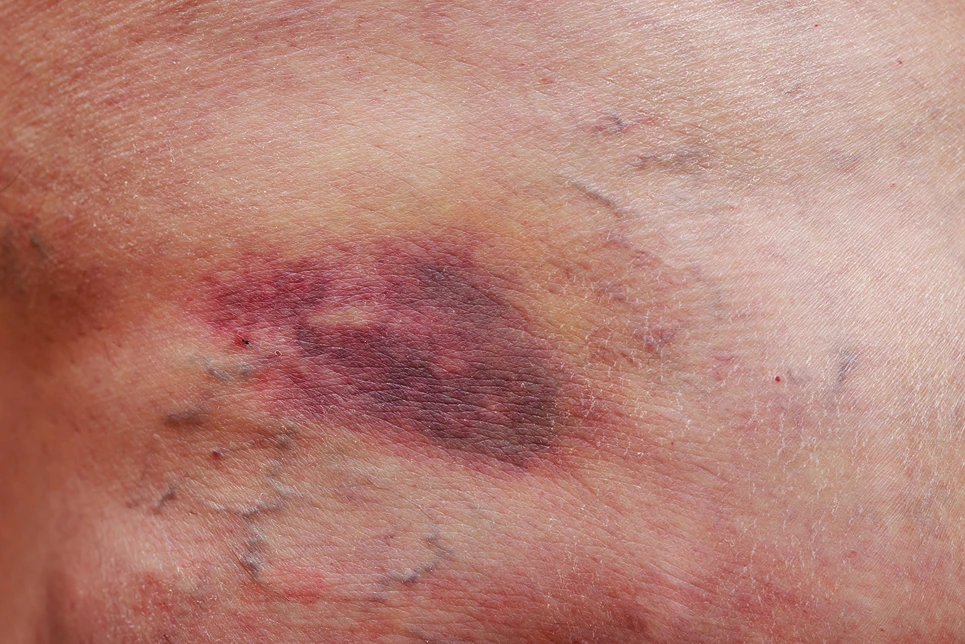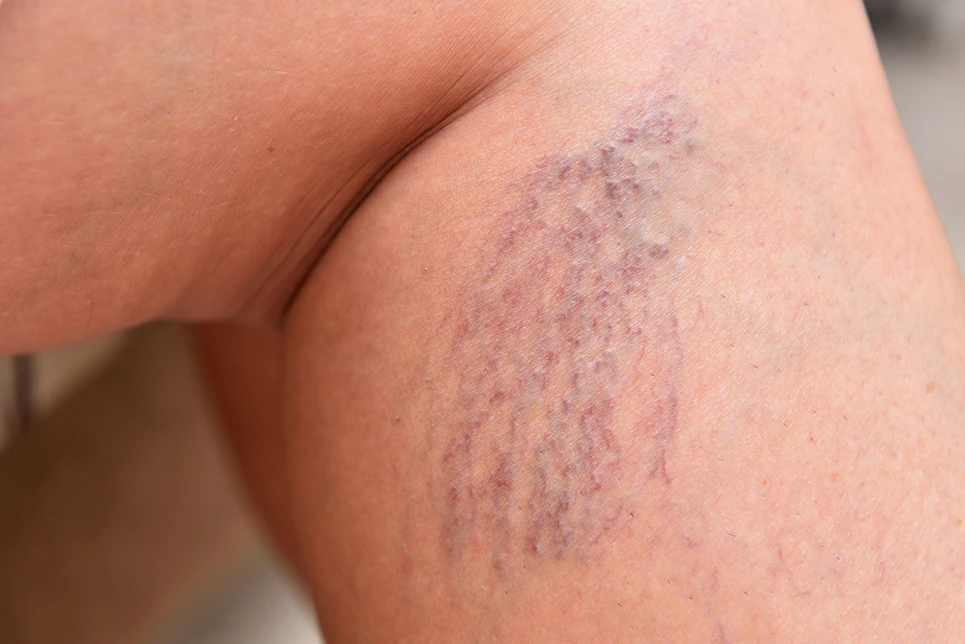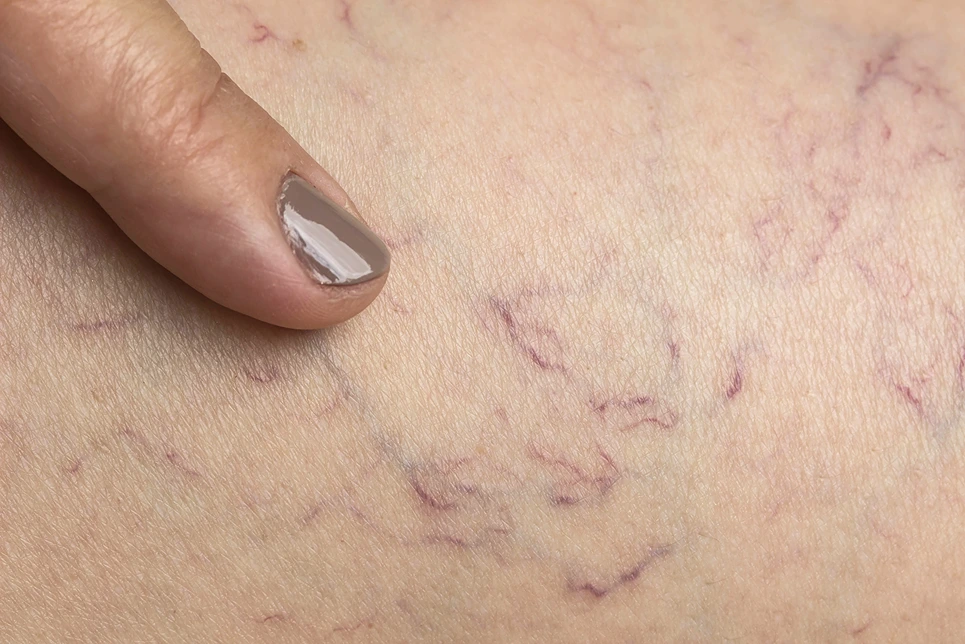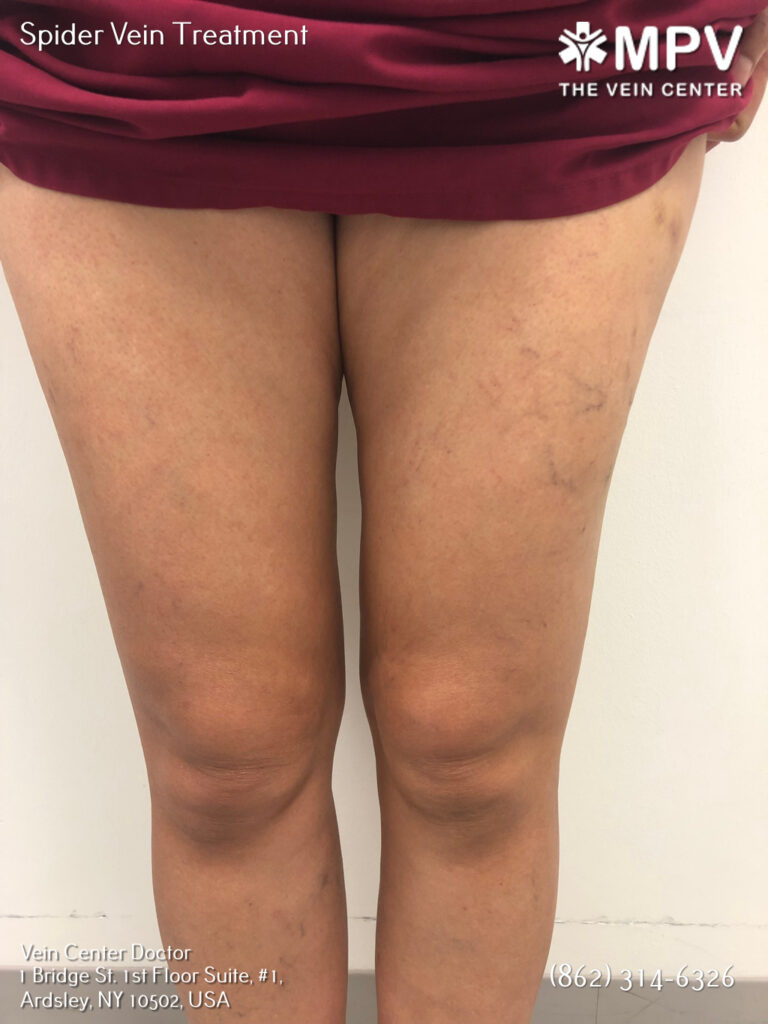
Have you noticed a suspicious-looking mark that resembles an insect bite? Don't be too quick to assume it's just a spider bite. That seemingly innocent welt could actually be caused by something more nefarious - a missed vein from intravenous drug use.
At The Vein Center Doctor, our experts understand how to differentiate between spider bites and missed veins. We want to empower you with the knowledge to identify these symptoms correctly, so you can seek proper diagnosis and treatment.
Read on as we explore the signs, dangers, and solutions for spider bites versus missed veins.
Living with unwanted veins is a thing of the past, when you can simply schedule a free consultation with Vein Center Doctor and find your ideal solution today.
Spider bites typically appear as small red bumps or welts on the surface of the skin. They may be slightly painful, swollen, and itchy. The affected area might develop a blister or pustule.
Spider bites usually look like:
Spider bites often occur in clusters or groups of two or three, as the spider tends to bite repeatedly in the same area. The bites are generally localized to one concentrated spot on the body.
While spider bites can vary in appearance depending on the type of spider, most feature the common symptoms of redness, mild swelling, and tenderness confined to the bite site.
Intravenous drug users often inject substances like opioids directly into their veins using a needle. Sometimes the needle misses or punctures completely through the vein, causing damage and leakage of the injected fluid into surrounding tissues.
This can lead to some troubling symptoms that may be mistaken for a spider bite such as:
Rather than a defined welt or bump, missed veins often create an open sore or lesion wherever the injection penetrates the skin. The area may become swollen, painful, and tender to the touch.
According to a study, about 56% of drug injections reported ever missing a vein, some even four times during the trial period.
Missed injections usually result in a singular wound, unlike spider bites which appear in multiples. The marks frequently correspond to blown veins or track marks in areas commonly used for injection, like the forearms, hands, ankles, or feet.
If the skin is broken, bacteria can enter and cause an infection. This will make the area hot, red, and swollen. Fever, chills, and pus drainage may also be present with an infected injection site.
Worried That Bite Could Be More? Get Peace Of Mind With A Fast Consultation From The Experts of The Vein Center Doctor.

Spider bites and missed veins can both cause red bumps and skin reactions. But there are some key differences to help tell them apart:
| Feature | Spider Bites | Missed Veins from Injections |
| Appearance | Groups of defined welts on intact skin | Solitary open wound |
| Pain Level | Mild | More severe |
| Location | Random areas of the body | Typical injection sites |
| Resolution | Resolve on their own | May become infected |
Being able to accurately distinguish a spider bite from the markings of intravenous drug use allows for proper diagnosis and treatment. Spider bites usually heal without issue after cleansing and first aid.
Missed veins require prompt medical care to prevent complications like infections, abscesses, and tissue damage.
Failing to realize a lesion is caused by a missed vein can have serious health consequences. Leaving an open wound in place allows further entry of bacteria leading to infections, which can spread quickly through the surrounding tissues and bloodstream.
Additionally, the substances injected into the soft tissues can cause tissue inflammation, damage, and death. This creates an open door for bacteria to invade more easily. Abscesses, ulcers, and dead tissue can develop.
Other dangers include:
These complications underscore the importance of seeking prompt medical attention for injection-related wounds. Proper diagnosis and treatment are crucial to avoid long-term issues and threats to life or limb.

If you suspect a missed vein from an IV or blood draw, there are some initial steps you can take at home while waiting to see a doctor:
Even with proper home treatment, it's important to seek medical evaluation if symptoms persist or worsen within a couple days. An untreated infection can become serious very quickly.
Don't Take Chances With Your Health - Get Any Questionable IV Or Blood Draw Marks Checked By The Vein Center Doctor.
Our vein specialists at The Vein Center Doctor have extensive training and experience evaluating skin lesions for accurate diagnosis and treatment. We will:
We provide compassionate, non-judgmental care to all patients, including those who use injection drugs. Your health is our top priority. We want to correctly identify the cause of any skin issues so we can get you on the road to healing as quickly as possible.
In addition to skin lesion evaluations, The Vein Center Doctor offers these treatments for spider veins:
| Treatment | Description |
| Sclerotherapy | A special solution is injected directly into the affected veins, forcing the veins to close and the blood to redirect into healthier veins. The old vein turns into scar tissue that your body will eventually absorb, causing it to fade. |
| Radiofrequency Ablation | Radiofrequency energy is used to heat and close damaged and unhealthy blood vessels. Your blood flow will be naturally redirected as your body absorbs the scar tissue. |
| Endovenous Laser Treatment | Laser technology and ultrasound guide the laser fiber to heat and close unhealthy blood vessels. |
| VenaSeal | An FDA-approved “vein glue” is injected to close the affected vein and allow your body to reabsorb it while redirecting blood flow. |
| Compression Therapy | Compression socks or stockings can improve blood flow and help your body absorb scar tissue faster when combined with other treatments. |
Don’t live with pain, swelling, or discomfort from vascular problems. The friendly professionals at The Vein Center Doctor are here to help! Contact us today to schedule an appointment.

Wondering whether that mark on your skin is just an insect bite or something more serious? Get answers today from the knowledgeable team at The Vein Center Doctor.
Call us at 1-862-500-4747 or book online to schedule your vein care evaluation. We provide top-notch vascular health services to patients across New York and New Jersey. Don’t wait - get the proper diagnosis and treatment you deserve!
Find exactly what you need to get rid of your vein-related problems. Dr. Sood and the rest of our team at Vein Center Doctor are ready to help: schedule your free consultation today.
Most Insurance is accepted for treatment